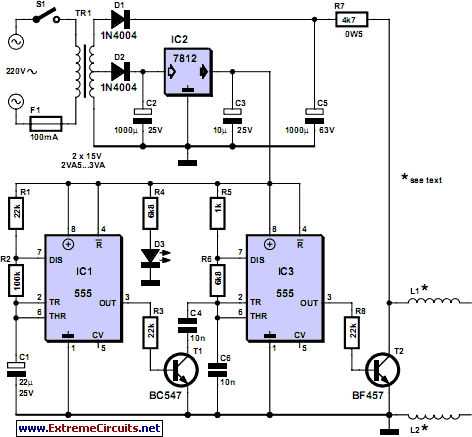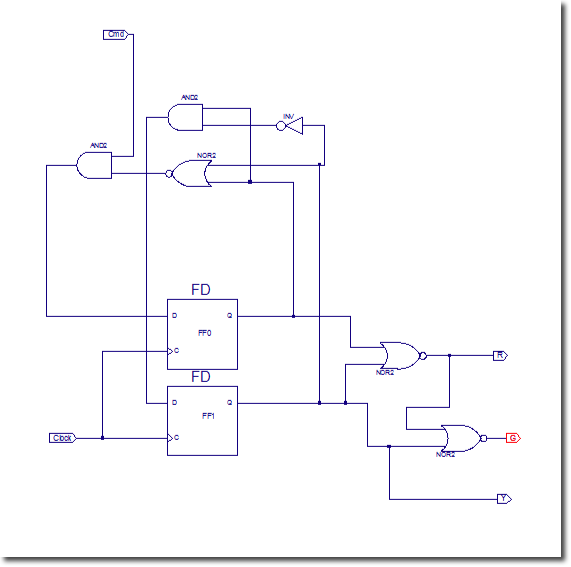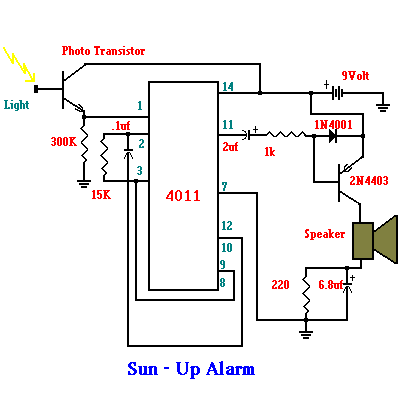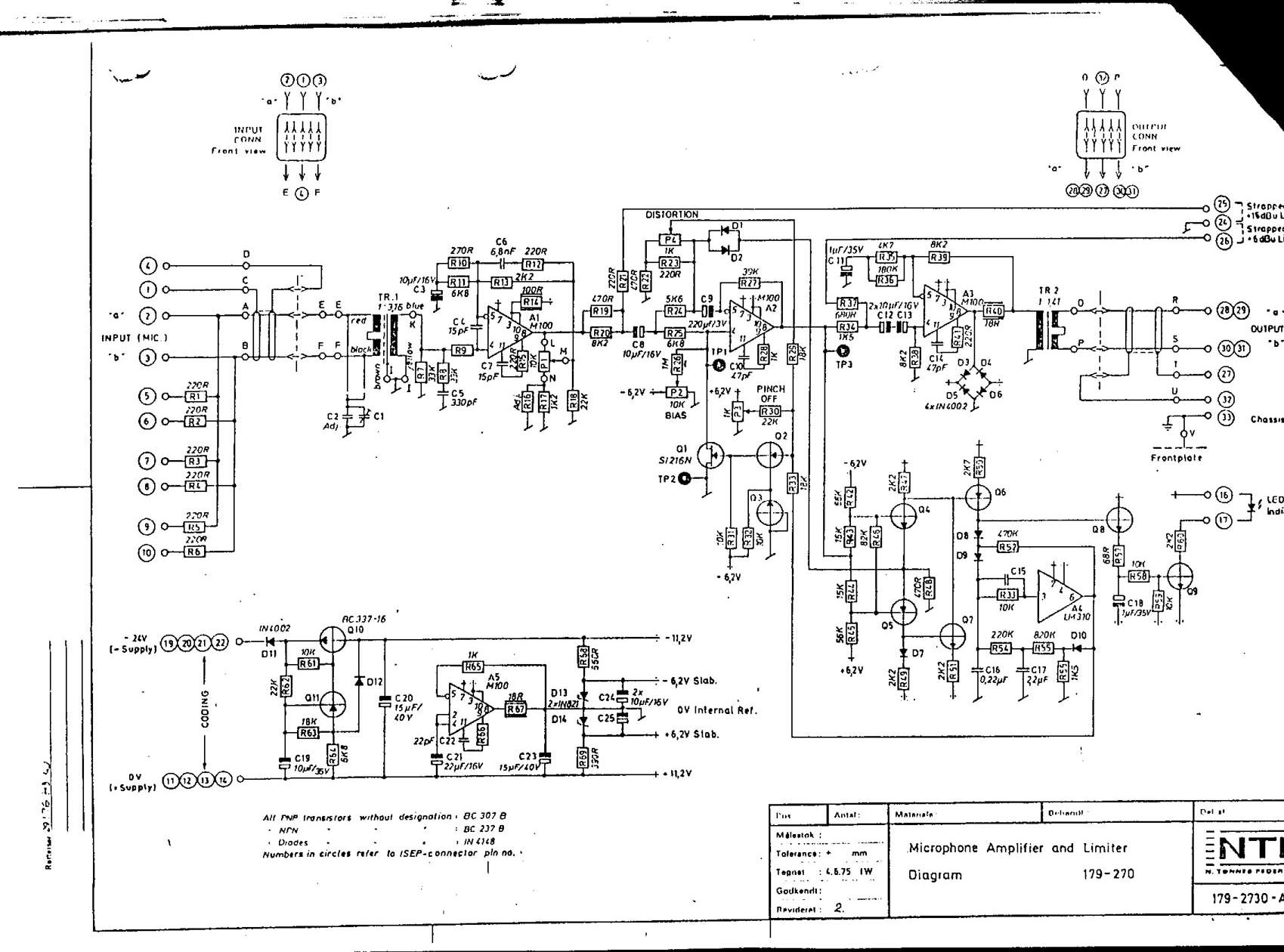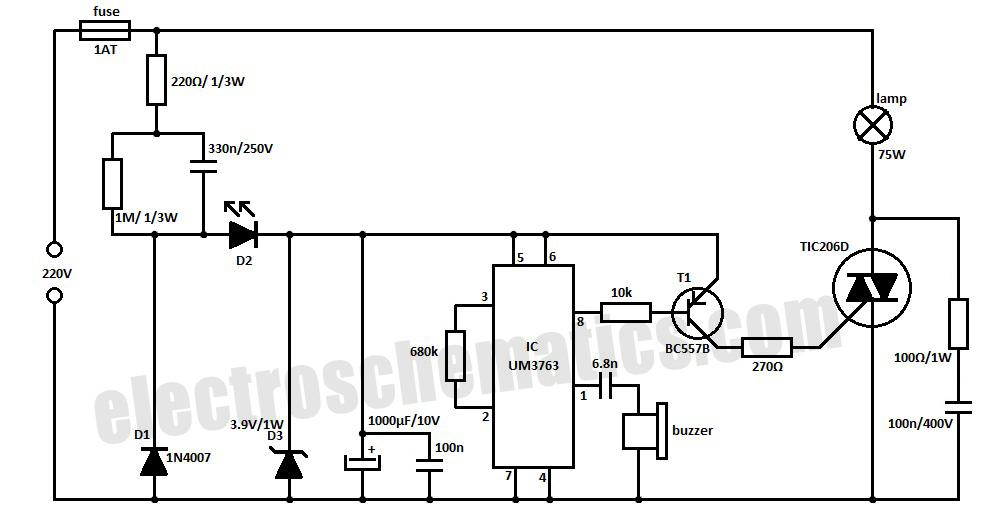
whistle responder schematics
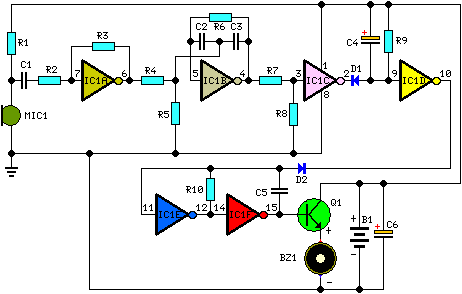
Approximately 20 years ago, it was common to encounter small key-holders that emitted an intermittent beep for a few seconds after the owner whistled. These devices utilized a specialized integrated circuit (IC) and were not suitable for home construction. The current circuit is designed around a general-purpose hex-inverter CMOS IC and can use miniature components and button cell batteries, allowing it to be housed in a matchbox. While primarily a gadget, it has various potential applications. This device beeps intermittently for about two seconds when a whistle is emitted within a range of approximately 10 meters. The first two inverters in IC1 function as audio amplifiers. IC1A consistently amplifies the signal captured by a small electret microphone, while IC1B serves as a band-pass filter, centered around a frequency of approximately 1.8 kHz. This filter is essential for selecting the specific frequency of the whistle and preventing other frequencies from triggering unwanted beeper operation. IC1C is configured as a Schmitt trigger, which squares the incoming audio signal. IC1D operates as a two-second delay monostable, which drives the astable multivibrator formed by IC1E and IC1F. This oscillator generates a square wave of 3 to 5 Hz that activates Q1 and BZ1, resulting in intermittent beeper operation.
The circuit design leverages a hex-inverter CMOS IC, specifically the CD40106, which incorporates multiple inverters that can be configured for various functions. The electret microphone is a critical component, as it converts sound waves into electrical signals. The microphone's output is first amplified by IC1A to ensure that the signal strength is sufficient for further processing. The subsequent band-pass filter (IC1B) is crucial for isolating the whistle frequency from ambient noise, which enhances the device's sensitivity and reliability.
The Schmitt trigger (IC1C) is employed to convert the analog audio signal into a clean digital signal, eliminating noise and ensuring that the output is a stable square wave. This is particularly important in applications where consistent timing is necessary. The monostable configuration of IC1D introduces a timing mechanism that allows the device to produce a beep for a defined duration after detecting a whistle, effectively creating a user-friendly interaction.
The astable multivibrator formed by IC1E and IC1F generates a square wave output that drives the transistor Q1. This transistor acts as a switch to control the beeper (BZ1), allowing it to produce sound at the desired frequency. The choice of a 3 to 5 Hz output frequency provides a pleasant and audible beep that is easily recognizable.
Overall, this circuit exemplifies a practical application of basic electronic components to create a user-friendly device that can serve various purposes, from locating keys to serving as a novelty gadget. Its compact design and reliance on commonly available components make it an excellent candidate for home construction and experimentation in electronic projects.Some 20 years ago it was common to see small key-holders emitting an intermittent beep for a couple of seconds after its owner whistled. These devices contained a special purpose IC and therefore were not suited to home construction. The present circuit is designed around a general purpose hex-inverter CMos IC and, using miniature components and b
utton clock-type batteries can be enclosed in a matchbox. It is primarily a gadget, but everyone will be able to find suitable applications. This device beeps intermittently for about two seconds when a person in a range of around 10 meters emits a whistle. The first two inverters contained in IC1 are used as audio amplifiers. IC1A amplifies consistently the signal picked-up by the small electret-microphone and IC1B acts as a band-pass filter, its frequency being centered at about 1.
8KHz. The filter is required in order to select a specific frequency, the whistle`s one, stopping other frequencies that would cause undesired beeper operation. IC1C is wired as a Schmitt trigger, squaring the incoming audio signal. IC1D is a 2 second-delay monostable driving the astable formed by IC1E & IC1F. This oscillator generates a 3 to 5Hz square wave feeding Q1 and BZ1, thus providing intermittent beeper operation.
🔗 External reference
The circuit design leverages a hex-inverter CMOS IC, specifically the CD40106, which incorporates multiple inverters that can be configured for various functions. The electret microphone is a critical component, as it converts sound waves into electrical signals. The microphone's output is first amplified by IC1A to ensure that the signal strength is sufficient for further processing. The subsequent band-pass filter (IC1B) is crucial for isolating the whistle frequency from ambient noise, which enhances the device's sensitivity and reliability.
The Schmitt trigger (IC1C) is employed to convert the analog audio signal into a clean digital signal, eliminating noise and ensuring that the output is a stable square wave. This is particularly important in applications where consistent timing is necessary. The monostable configuration of IC1D introduces a timing mechanism that allows the device to produce a beep for a defined duration after detecting a whistle, effectively creating a user-friendly interaction.
The astable multivibrator formed by IC1E and IC1F generates a square wave output that drives the transistor Q1. This transistor acts as a switch to control the beeper (BZ1), allowing it to produce sound at the desired frequency. The choice of a 3 to 5 Hz output frequency provides a pleasant and audible beep that is easily recognizable.
Overall, this circuit exemplifies a practical application of basic electronic components to create a user-friendly device that can serve various purposes, from locating keys to serving as a novelty gadget. Its compact design and reliance on commonly available components make it an excellent candidate for home construction and experimentation in electronic projects.Some 20 years ago it was common to see small key-holders emitting an intermittent beep for a couple of seconds after its owner whistled. These devices contained a special purpose IC and therefore were not suited to home construction. The present circuit is designed around a general purpose hex-inverter CMos IC and, using miniature components and b
utton clock-type batteries can be enclosed in a matchbox. It is primarily a gadget, but everyone will be able to find suitable applications. This device beeps intermittently for about two seconds when a person in a range of around 10 meters emits a whistle. The first two inverters contained in IC1 are used as audio amplifiers. IC1A amplifies consistently the signal picked-up by the small electret-microphone and IC1B acts as a band-pass filter, its frequency being centered at about 1.
8KHz. The filter is required in order to select a specific frequency, the whistle`s one, stopping other frequencies that would cause undesired beeper operation. IC1C is wired as a Schmitt trigger, squaring the incoming audio signal. IC1D is a 2 second-delay monostable driving the astable formed by IC1E & IC1F. This oscillator generates a 3 to 5Hz square wave feeding Q1 and BZ1, thus providing intermittent beeper operation.
🔗 External reference
Warning: include(partials/cookie-banner.php): Failed to open stream: Permission denied in /var/www/html/nextgr/view-circuit.php on line 713
Warning: include(): Failed opening 'partials/cookie-banner.php' for inclusion (include_path='.:/usr/share/php') in /var/www/html/nextgr/view-circuit.php on line 713
